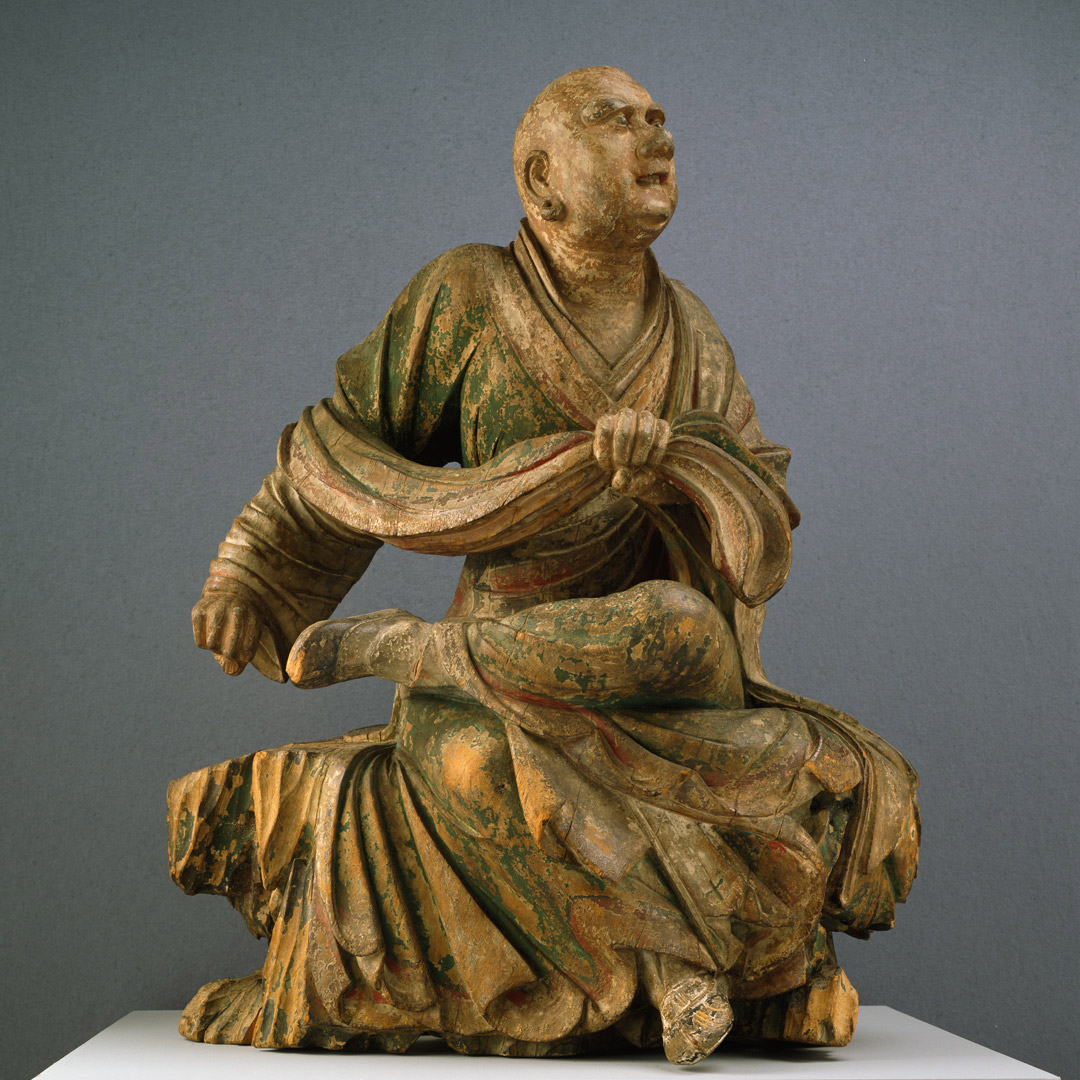
Dragon Tamer Luohan
ca. 14th century, Wood with polychrome decoration, China, Yuan dynasty (1271–1368), 36.13
Proud Moment
Acquiring this sculpture was a proud moment for Dr. Richard E. Fuller, the founder of the Seattle Art Museum, and it remains one of the museum’s most important and popular artworks. Fuller sailed to England in 1935 to view an important exhibition of Chinese art in the Royal Academy of Arts, London, which whetted his appetite to expand his horizons as a collector. He acquainted himself with London’s art dealers, including Yamanaka & Co., where Fuller acquired this piece as well as several Chinese paintings, items he could not find in the United States.


